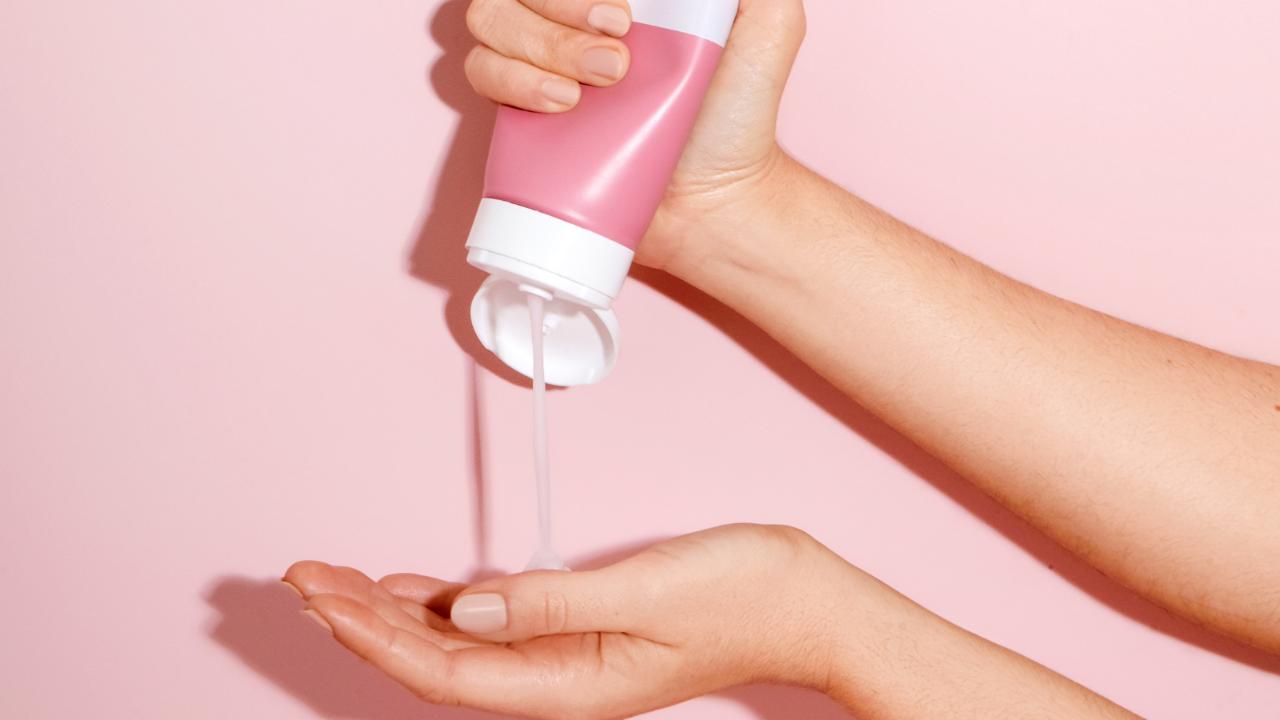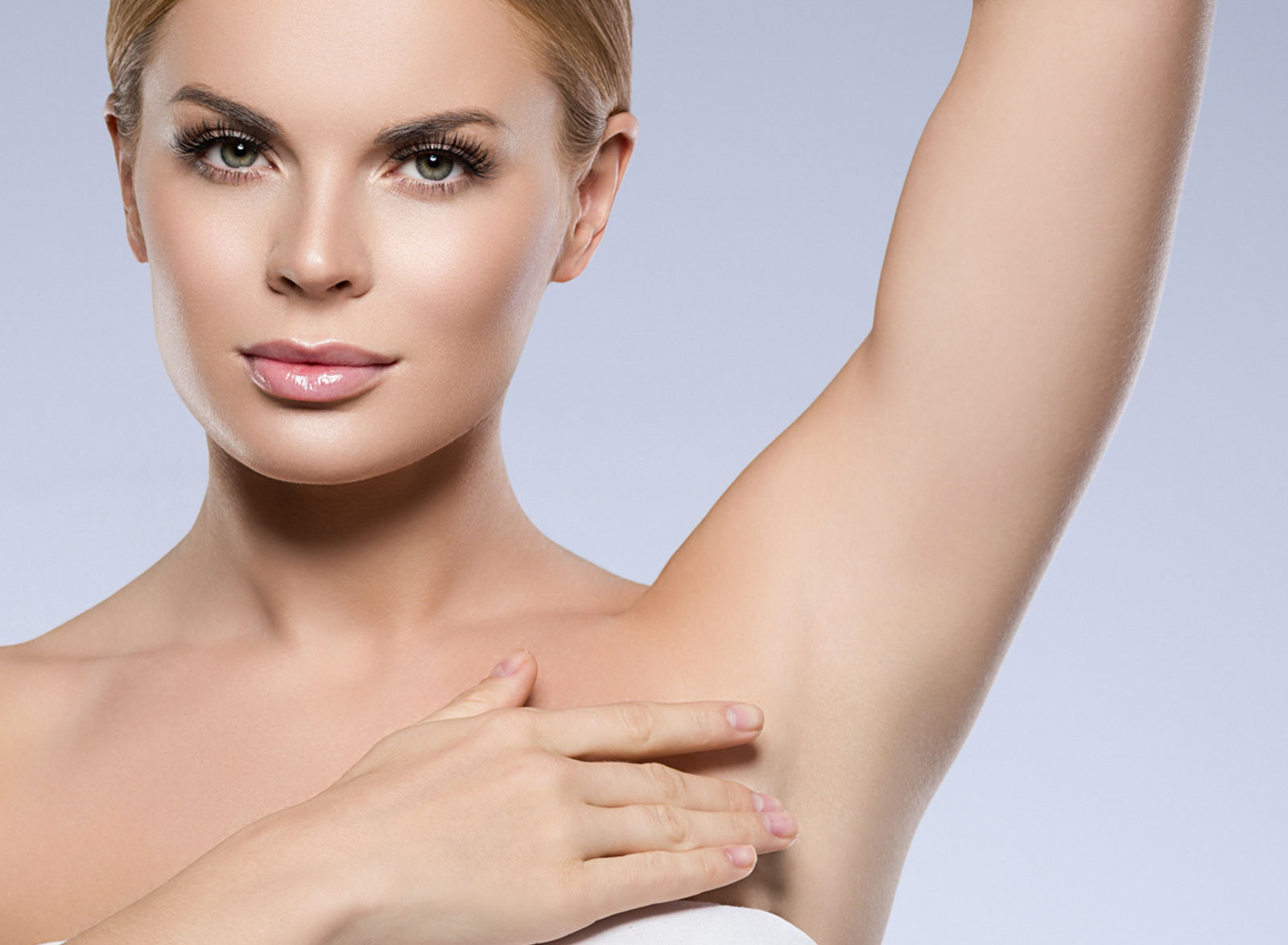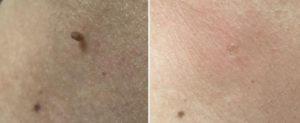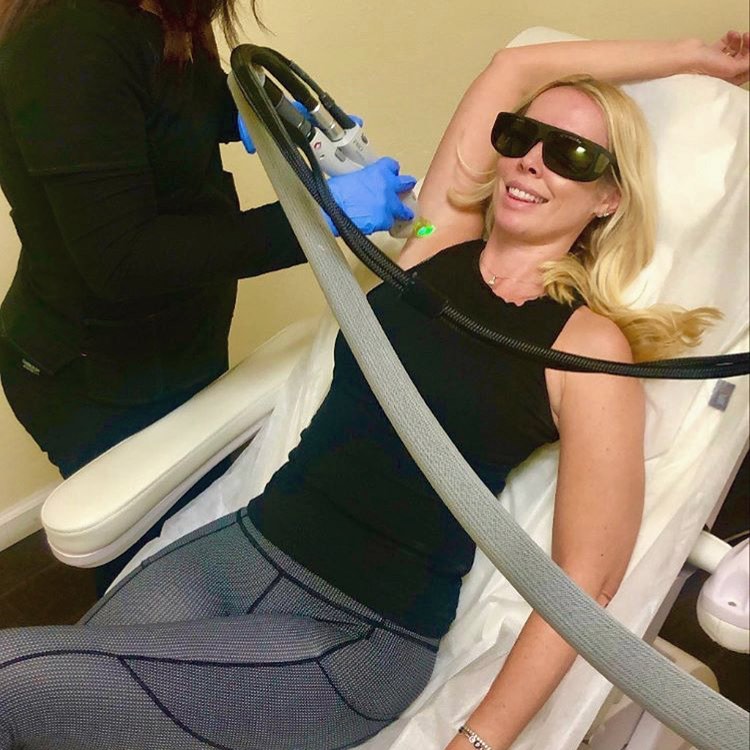Areola darkening can be a source of insecurity for many individuals, impacting their confidence and self-esteem. Spoiled Laser, your trusted destination for beauty transformation, understands the importance of feeling comfortable in your own skin. That is why we have curated this article to provide you with effective techniques on how to lighten your areola. By following our expert advice and utilizing our range of premium services, including laser treatments and skin bleaching, you can achieve the desired results and regain your self-assurance. Let us empower you to look and feel your best with our comprehensive solutions for all your beauty needs.
Understanding Areola Darkening
What is areola darkening?
Areola darkening refers to the darkening of the pigmented area surrounding the nipple on the breast. This natural phenomenon can occur due to various reasons, such as hormonal changes, pregnancy, aging, or certain medical conditions. While it is a common occurrence, some individuals may feel self-conscious about the darkened areola and may seek remedies to lighten the area.
Causes of areola darkening
Areola darkening can be caused by several factors, including hormonal changes during puberty or pregnancy. When a woman is pregnant, an increase in estrogen levels can cause the areola to darken. Additionally, the natural aging process can lead to a gradual darkening of the areola due to a decrease in collagen production and overall skin changes. Some medical conditions, such as hormonal imbalances or certain medications, may also contribute to areola darkening.
Common misconceptions about areola darkening
There are several misconceptions surrounding areola darkening. One common belief is that it is a sign of breast cancer. However, in most cases, areola darkening is a normal and harmless occurrence. It is essential not to panic if your areolas darken, but it is still recommended to consult with a dermatologist to rule out any underlying medical conditions. Additionally, some people may believe that areola darkening is permanent, which is not always the case. With the right treatments and skincare routine, it is possible to lighten the areola.
Get Your Free Consultation Today
Natural Remedies to Lighten Areola
Lemon juice
Lemon juice is a natural bleaching agent and can be an effective remedy for lightening the areola. Its acidic properties help to break down pigmented cells and promote new cell growth. To use lemon juice, apply fresh lemon juice to the areola using a cotton ball or pad. Leave it on for 10-15 minutes and then rinse with warm water. Repeat this process daily for several weeks to see results.
Aloe vera gel
Aloe vera gel has soothing properties and can also help lighten the areola. Apply a small amount of pure aloe vera gel to the areola and massage gently for a few minutes. Leave it on for 20-30 minutes and then rinse with water. Repeat this process twice daily for the best results.
Cucumber slices
Cucumber slices have a cooling and refreshing effect on the skin and can also help lighten the areola. Take a fresh cucumber and slice it into thin pieces. Place the cucumber slices on the areola and leave them on for 15-20 minutes. Rinse the area with water afterward. You can repeat this process daily for a few weeks to notice a lightening effect.
Potato slices
Potato slices contain enzymes and natural bleaching agents that can help lighten the areola. Cut a raw potato into thin slices and place them on the areola. Leave them on for 15-20 minutes and then rinse with water. Repeat this process daily for several weeks for optimal results.
Almond oil
Almond oil is known for its moisturizing properties and can help nourish the skin around the areola while also lightening it. Apply a small amount of almond oil to the areola and massage gently in a circular motion for a few minutes. Leave it on overnight and rinse with water in the morning. Repeat this process daily for several weeks to see a noticeable difference.
Medical Treatments for Areola Lightening
Topical creams and serums
Dermatologists may recommend topical creams and serums that contain ingredients such as hydroquinone, kojic acid, or retinol to lighten the areola. These ingredients work by inhibiting the production of melanin, the pigment that gives color to the skin. It is important to follow the instructions provided by the dermatologist and use these products as directed to avoid any adverse effects.
Chemical peels
Chemical peels involve applying a chemical solution to the areola to exfoliate the outer layers of the skin. This helps to remove pigmented cells and stimulate the growth of new, lighter skin cells. Dermatologists can perform different types of chemical peels, such as superficial or medium peels, depending on the severity of the pigmentation. It is crucial to consult with a dermatologist to determine if chemical peels are a suitable option for lightening the areola.
Laser therapy
laser therapy is a non-invasive procedure that uses focused laser beams to target and break down the pigmented cells in the areola. This treatment stimulates collagen production and helps to reveal lighter, refreshed skin. Multiple sessions may be required to achieve the desired results, and it is important to consult with a qualified dermatologist or medical professional skilled in laser therapy.
Microdermabrasion
Microdermabrasion is a cosmetic procedure that exfoliates the outer layers of the skin using a device that sprays fine crystals or uses a diamond-tipped wand. This process removes dead and pigmented skin cells, revealing lighter and brighter skin. Multiple sessions may be required to achieve significant lightening of the areola, and it is vital to consult with a dermatologist to determine if microdermabrasion is a suitable option.
Cryotherapy
Cryotherapy involves using freezing temperatures to destroy unwanted pigmented cells in the areola. This treatment is typically performed by a dermatologist and can help lighten the skin in the area. It is important to discuss the potential risks and benefits of cryotherapy with a dermatologist before considering this option.
Consulting with a Dermatologist
When to see a dermatologist
If you are concerned about the darkening of your areola or if it is accompanied by any other unusual symptoms, it is advisable to consult with a dermatologist. They can evaluate your condition, rule out any underlying medical conditions, and recommend appropriate treatments or skincare routines to lighten the areola.
What to expect during a consultation
During a consultation with a dermatologist, they will likely ask you about your medical history, including any previous skin issues or treatments. They may also examine your areola and discuss your concerns and goals. Based on their evaluation, they will recommend suitable treatment options, whether natural remedies, medical treatments, or a combination of both.
Choosing the right dermatologist
When selecting a dermatologist, it is crucial to find a qualified and experienced professional who specializes in cosmetic dermatology. Look for board-certified dermatologists who have a good reputation and positive patient reviews. It is also important to feel comfortable with the dermatologist and confident in their expertise.
Tips for Preventing Areola Darkening
Wear sunscreen
Regularly applying a broad-spectrum sunscreen with a high SPF to the areola can help prevent further darkening. Sun exposure can stimulate the production of melanin, leading to more pigmentation in the area. By protecting the areola from harmful UV rays, you can minimize the risk of darkening.
Avoid excessive sun exposure
In addition to wearing sunscreen, it is important to avoid excessive sun exposure, especially during peak hours when the sun’s rays are the strongest. Seek shade whenever possible and wear protective clothing to minimize the skin’s exposure to sunlight.
Use gentle skincare products
Using gentle and non-irritating skincare products on the areola can help maintain its health and prevent darkening. Avoid harsh soaps or cleansers that may strip the natural oils from the skin, as this can lead to dryness and pigmentation issues.
Avoid harsh chemicals
Certain chemicals found in skincare products or laundry detergents can irritate the skin and potentially lead to darkening. Opt for products that are fragrance-free and dermatologically tested to reduce the likelihood of adverse reactions.
Maintain a healthy lifestyle
Maintaining a healthy lifestyle, including a balanced diet, regular exercise, and adequate hydration, can contribute to overall skin health. Eating a diet rich in antioxidants and nutrients can help promote skin rejuvenation and reduce the likelihood of pigmentation issues.
Areola Lightening Products
Understanding the different types of products
There are various types of areola lightening products available in the market, including creams, lotions, serums, and gels. These products may contain ingredients such as hydroquinone, kojic acid, azelaic acid, vitamin C, or licorice extract, which are known to help lighten the skin.
Ingredients to look for
When searching for areola lightening products, it is important to look for ingredients that are clinically proven to be effective and safe. Hydroquinone, for example, is a widely used ingredient in lightening products and is considered effective for reducing pigmentation. Other ingredients, such as vitamin C and licorice extract, have antioxidant properties that can help brighten the skin.
Product recommendations
While specific product recommendations may vary based on individual needs and preferences, some popular areola lightening products include Mederma Advanced Skin Lightening Gel, Murad Rapid Age Spot and Pigment Lightening Serum, and Palmer’s Skin Success Fade Cream. It is essential to read product reviews, consult with a dermatologist, and perform a patch test before using any new product to ensure suitability and to minimize the risk of adverse reactions.
Potential Risks and Side Effects
Allergic reactions
Some individuals may be sensitive or allergic to certain ingredients or compounds found in areola lightening products. This can manifest as redness, itching, or swelling in the area. It is crucial to perform a patch test on a small area of skin before using any new product to identify any potential allergic reactions.
Skin irritation
Certain lightening products, especially those containing harsh chemicals or abrasive exfoliants, may cause skin irritation or sensitivity. It is important to follow the instructions provided with the product and to discontinue use if any discomfort or irritation occurs.
Hyperpigmentation
In some cases, improper or excessive use of lightening products can lead to a condition known as rebound hyperpigmentation. This occurs when the skin reacts to the lightening product by producing more melanin, resulting in darker pigmentation. It is important to use lightening products as directed and to gradually introduce them into your skincare routine to minimize the risk of hyperpigmentation.
Infection
If not used properly or in a sterile manner, certain treatments or procedures for areola lightening, such as chemical peels or cryotherapy, can potentially lead to infection. It is crucial to follow the instructions provided by the dermatologist or healthcare professional performing the treatment and to keep the area clean and protected during the healing process.
Scarring
Aggressive or improper use of certain treatments, such as laser therapy or chemical peels, can increase the risk of scarring. It is important to choose a reputable and experienced dermatologist or medical professional when undergoing such procedures to minimize the risk of adverse effects.
Understanding Skin Anatomy
What is the areola?
The areola is the circular pigmented area surrounding the nipple on the breast. It contains specialized sweat glands called Montgomery’s glands, which secrete oils to keep the areola and nipple lubricated and protected.
Why does the areola darken?
The darkening of the areola is primarily caused by an increase in melanin production. Melanin is a pigment responsible for the color of our hair, skin, and eyes. Hormonal changes, such as those during pregnancy or puberty, can trigger an increase in melanin production, leading to the darkening of the areola.
Role of melanin in skin color
Melanin plays a vital role in determining our skin color. The more melanin our skin produces, the darker our skin tone. It acts as a protective mechanism against the harmful effects of ultraviolet (UV) radiation from the sun. Different individuals have varying levels of melanin production, which contributes to the natural diversity of skin colors.
Importance of Skin Lightening Safety
Avoiding risky procedures
When seeking to lighten the areola or any other part of the body, it is important to prioritize safety and choose methods that are backed by scientific research and recommended by qualified professionals. Avoid using unregulated or potentially harmful products or undergoing risky procedures without proper medical guidance.
Using products as directed
To ensure optimal results and minimize the risk of adverse effects, it is essential to carefully read and follow the instructions provided with any areola lightening products. Using products excessively or not as directed can increase the likelihood of side effects such as irritation, hyperpigmentation, or scarring.
Monitoring for any adverse reactions
When using areola lightening products or undergoing treatments, it is crucial to monitor the skin for any adverse reactions. If you experience any discomfort, redness, itching, or swelling, discontinue use and consult with a dermatologist or medical professional. Promptly addressing any adverse reactions can prevent further complications and promote proper healing.
Conclusion
In conclusion, areola darkening is a common occurrence that can be attributed to various factors, such as hormonal changes, pregnancy, aging, or certain medical conditions. While it may not be a cause for concern, individuals who feel self-conscious about the darkened areola can explore various treatment options to lighten the area.
Natural remedies such as lemon juice, aloe vera gel, cucumber slices, potato slices, and almond oil can be effective in lightening the areola. However, if natural remedies do not produce the desired results, seeking medical treatments under the guidance of a dermatologist may be necessary. Topical creams, chemical peels, laser therapy, microdermabrasion, and cryotherapy are some of the medical treatments available for areola lightening.
Consulting with a dermatologist is crucial for proper evaluation, diagnosis, and guidance on the most suitable treatment options. It is important to follow a preventive skincare routine to maintain the health of the areola and minimize the risk of darkening. This includes wearing sunscreen, avoiding excessive sun exposure, using gentle skincare products, avoiding harsh chemicals, and maintaining a healthy lifestyle.
When using areola lightening products, it is essential to understand their ingredients and potential risks. Allergic reactions, skin irritation, hyperpigmentation, infection, and scarring are some potential risks and side effects to be aware of. Understanding the anatomy of the areola and the role of melanin in skin color can provide insight into the causes and nature of areola darkening.
Skin lightening safety should always be prioritized by avoiding risky procedures, using products as directed, and monitoring for any adverse reactions. It is important to consult with a dermatologist or medical professional to ensure proper guidance and to maintain overall skin health.
By understanding the effective methods for areola lightening and consulting professionals, individuals can achieve their desired results while minimizing potential risks. Maintaining overall skin health should always be the ultimate goal, striving for a healthy and confident you.




